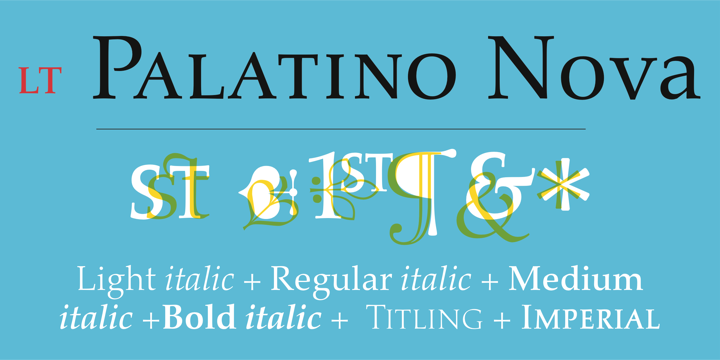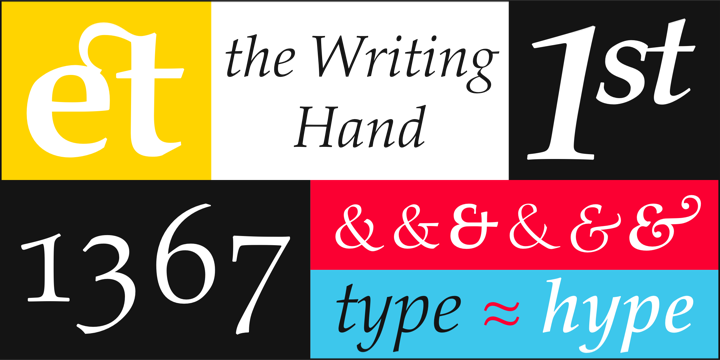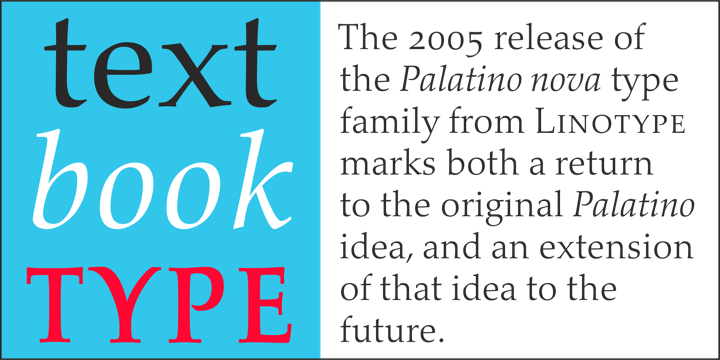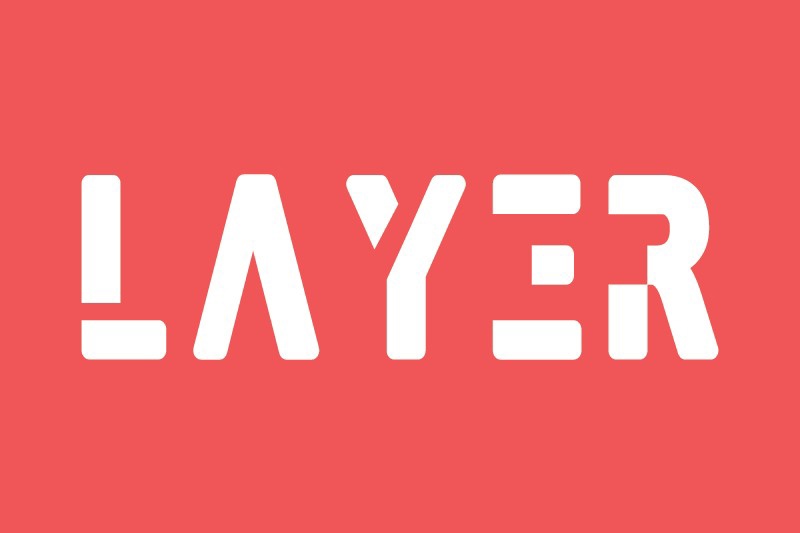


Informacje o czcionce
Zebraliśmy wszystkie najważniejsze informacje o czcionce Palatino Nova Bold Italic. Poniżej znajduje się tabela dotycząca wersji pliku czcionki, licencji, praw autorskich, projektanta i nazwy dostawcy. Informacje są pobierane z pliku czcionki "TTF".
| Nazwa rodziny czcionki | Palatino Nova |
| Nazwa czcionki | PalatinoNova-BoldItalic |
| Nazwa stylu | Bold Italic |
| Identyfikator czcionki | Version 1.000;PS 001.000;hotconv 1.0.38;com.myfonts.easy.linotype.palatino-nova.w1g-bold-italic.wfkit2.version.48JR;LINO;PalatinoNova-BoldItalic;2014;FLVI-600 |
| Wersja czcionki | Version 1.000;PS 001.000;hotconv 1.0.38;com.myfonts.easy.linotype.palatino-nova.w1g-bold-italic.wfkit2.version.48JR |
| Znak towarowy | Palatino is a trademark of Linotype Corp. registered in the U.S. Patent and Trademark Office and may be registered in certain other jurisdictions in the name of Linotype Corp. or its licensee Linotype GmbH. |
| Projektant | Hermann Zapf and Akira Kobayashi |
| Projektant link | http://www.linotype.com/fontdesigners |
| Link do sprzedawcy (dostawcy) | http://www.linotype.com |
| Producent | Linotype GmbH |
| prawa autorskie | Copyright © 2009 Linotype GmbH, www.linotype.com. All rights reserved. This font software may not be reproduced, modified, disclosed or transferred without the express written approval of Linotype GmbH. Palatino is a trademark of Linotype Corp. registered in the U.S. Patent and Trademark Office and may be registered in certain other jurisdictions in the name of Linotype Corp. or its licensee Linotype GmbH. This typeface is original artwork of Hermann Zapf and Akira Kobayashi. The design may be protected in certain jurisdictions. |
| Opis | Palatino nova is Prof. Hermann Zapf's redesign of his own masterpiece, Palatino. The original Palatino was cut in metal by August Rosenberger at D. Stempel AG typefoundry in Frankfurt, and released in 1950. Palatino was later adapted for mechanical composition on the Linotype machine, and became one of the most-used typefaces of the 20th Century. Palatino was designed for legibility, and has open counters and carefully weighted strokes. The type was named after Giambattista Palatino, a master of calligraphy from the time of Leonardo da Vinci. Palatino is a typeface based on classical Italian Renaissance forms. A modern classic in its own right, Palatino is popular among professional graphic designers and amateurs alike, working well for both text and display typography. Hermann Zapf and Akira Kobayashi redeveloped Palatino for the 21st Century, creating Palatino nova. Released by Linotype in 2005, the Palatino nova family is part of Linotype's Platinum Collection. Palatino nova includes several weights (Light, Regular, Medium, and Bold), each with companion italics. Four styles (Regular, Italic, Bold, and Bold Italic) have Greek and Cyrillic glyphs built into their character sets. The Palatino nova family also includes revised versions of Aldus (now called Aldus nova), as well as two titling weights. The first titling weight, Palatino nova Titling, is based on Hermann Zapf's metal typeface Michelangelo, including Greek glyphs from Phidias Greek. The heavier titling weight, Palatino nova Imperial, is based on Sistina. The fonts in the Palatino nova family support 48 Western, Central, and Eastern European languages. Additional features: ligatures and historical ligatures, Small Caps, ornaments, and a range of numerals (proportional & tabular width lining and Oldstyle figures, fractions, inferiors, and superiors). |






Uwagi